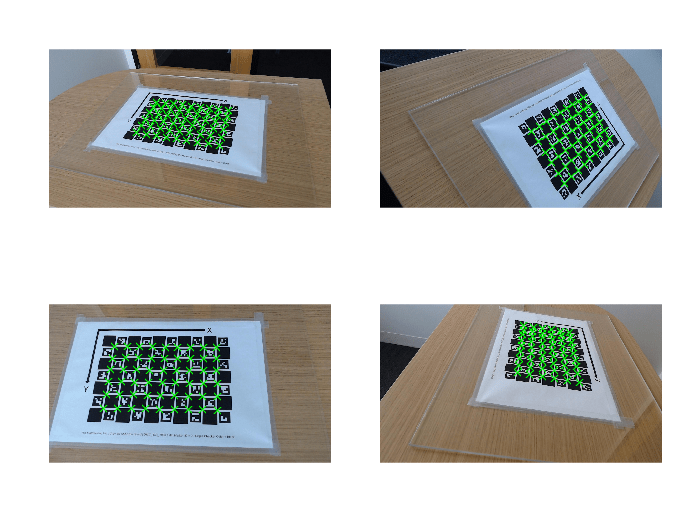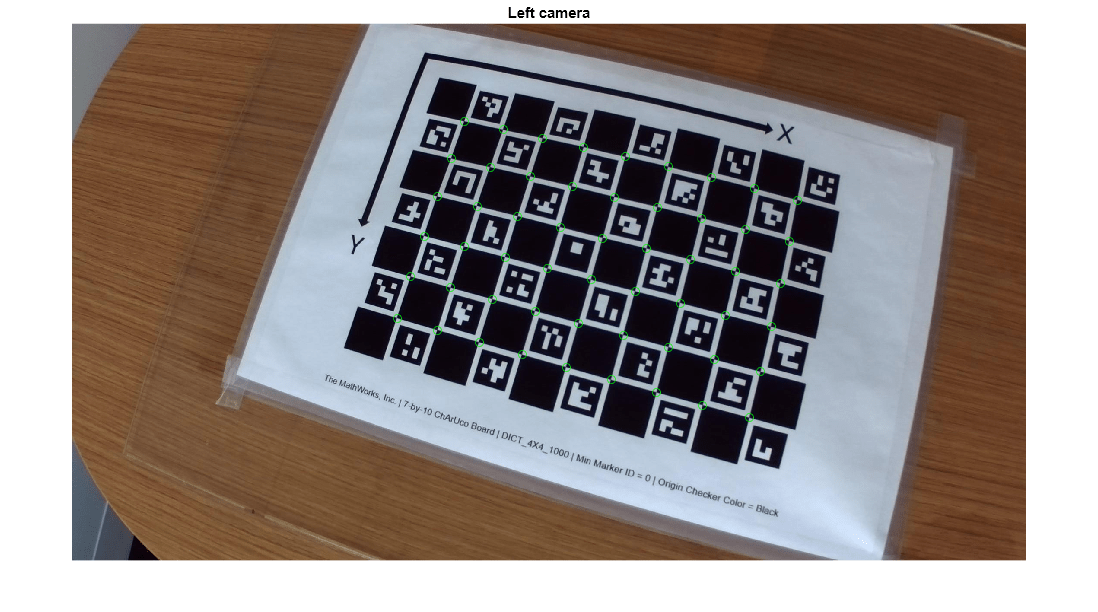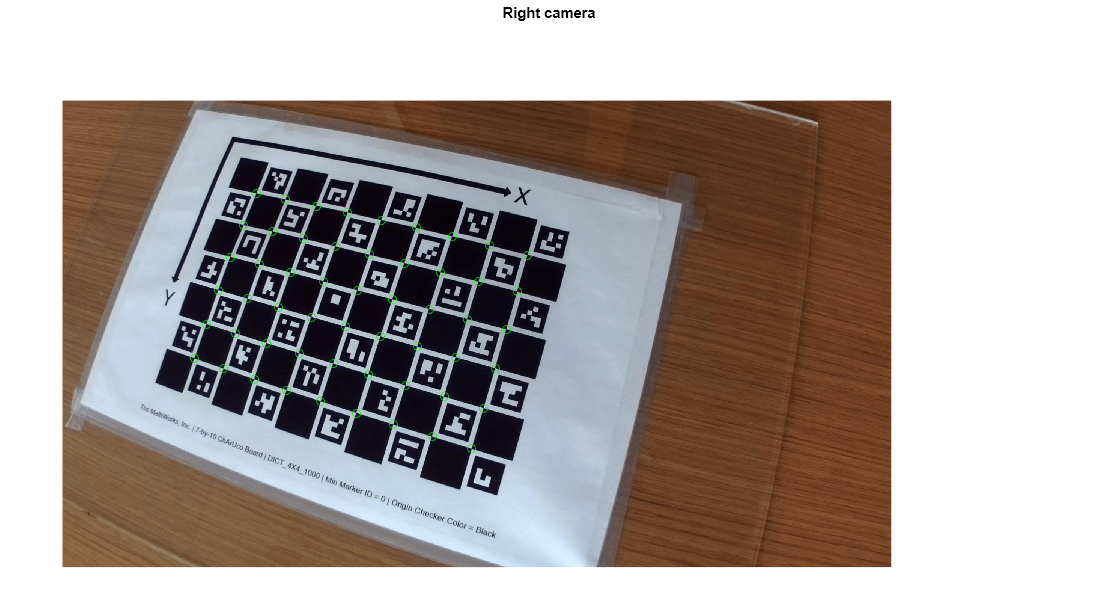detectCharucoBoardPoints
Syntax
Description
Single Image ChArUco Board Detection
imagePoints = detectCharucoBoardPoints(I,patternDims,markerFamily,checkerSize,markerSize)
imagePoints = detectCharucoBoardPoints(___,intrinsics)intrinsics.
[
detects a ChArUco board in the image files specified by
imagePoints,imagesUsed] = detectCharucoBoardPoints(imageFileNames,___)imageFileNames, and additionally returns the list of images in
which the board is detected imagesUsed.
[___] = detectCharucoBoardPoints(
detects a ChArUco board in the specified images images,___)images.
Stereo Pair ChArUco Board Detection
[
detects a ChArUco board in a set of 2-D truecolor or grayscale image.imagePoints] = detectCharucoBoardPoints(I1,I2,patternDims,markerFamily,checkerSize,markerSize)
[
detects ChArUco corners in a set of 2-D truecolor or grayscale using approximated pose
estimation. The approximation is based on the estimated extrinsic properties, given the
camera imagePoints] = detectCharucoBoardPoints(I1,I2,patternDims,markerFamily,checkerSize,markerSize,intrinsics)intrinsics.
[
detects an ChArUco pattern in the stereo pairs of image files specified by
imagePoints,pairsUsed] = detectCharucoBoardPoints(imageFileNames1,imageFileNames2,patternDims,markerFamily,checkerSize,markerSize)imageFileNames1 and imageFileNames2. The
function additionally returns a list of the pairs in which the board is detected
pairsUsed.
[___] = detectCharucoBoardPoints(
detects an ChArUco pattern in the stereo pairs of image files specified by
I1,I2,intrinsics)images1 and images2.
Optional Arguments
[___] = detectCharucoBoardPoints(___,
specifies options using one or more name-value arguments in addition to any combination of
arguments from previous syntaxes. For example, Name=Value)NumBorderBits=2 sets the
number of border bits to detect a marker to 2.
Examples
Input Arguments
Name-Value Arguments
Output Arguments
Tips
When no ArUco marker was detected in the board image, the function returns
imagePointswithNaNfor its surrounding ChArUco corner locations.To debug any missed detections of ArUco markers, you can use the
readArucoMarkerfunction.To specify a
fisheyeIntrinsicsobject, first undistort the image using theundistortFisheyeImagefunction. Use the undistorted image for thedetectChArUcoBoardPointsimage input and thecameraIntrinsicsobject that theundistortFisheyeImagefunction returns for theintrinsicsargument.To detect multiple ChArUco boards in the same image, use this function with a unique for
MinMarkerID, for each board.To use this function, the markers in the pattern must correspond to sequential IDs, each incremented by
1.


